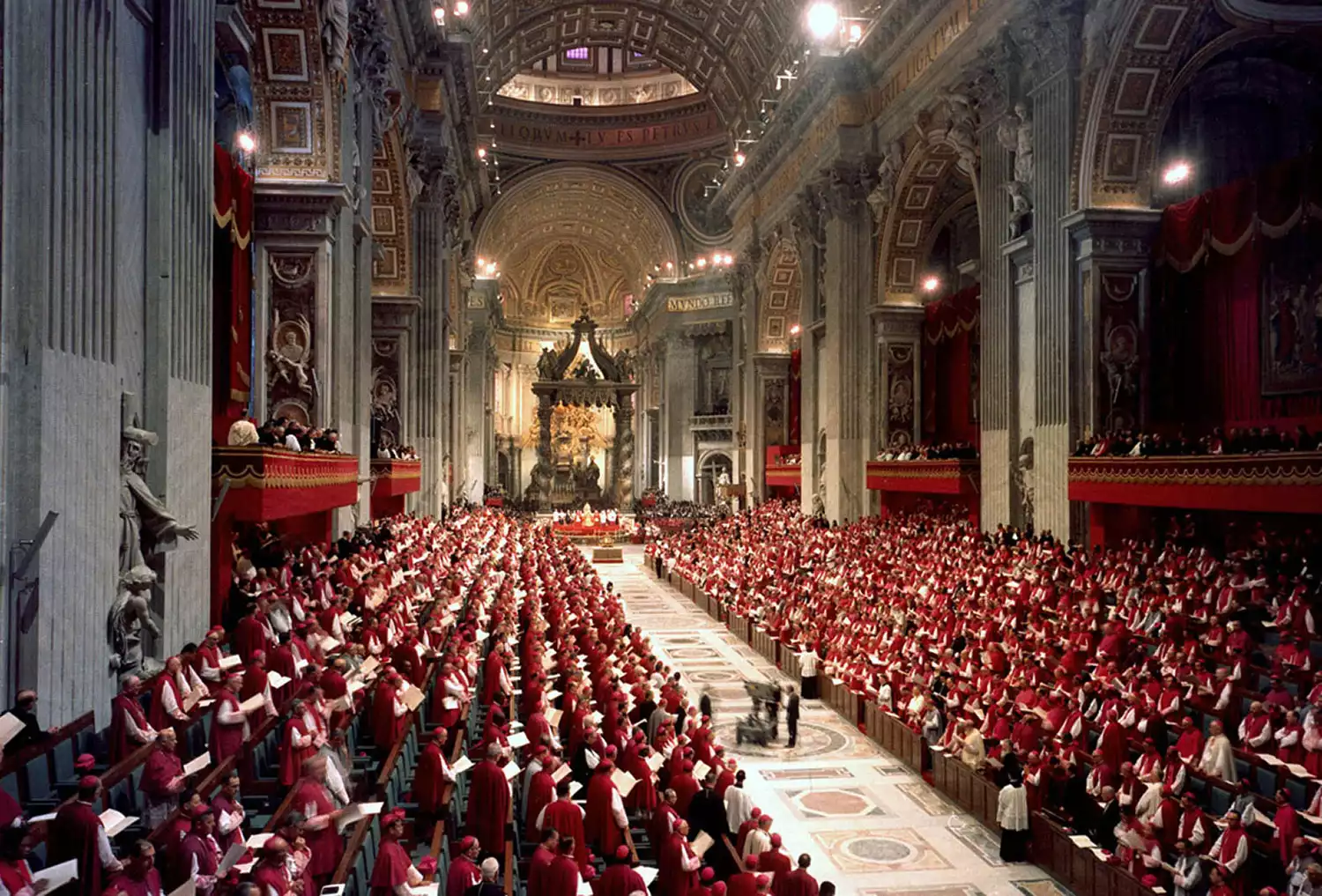
Unveiling a New Vision for the Church
The Second Vatican Council, initiated on October 11, 1962, was an assembly unlike any other in the history of the Catholic Church. It was convened with an ambitious goal: to renew the Church’s understanding of itself in a rapidly changing world and to foster unity among different Christian denominations. This Council was not just a series of meetings but a profound journey of self-examination and renewal. It sought to address key issues facing the Church, including the nature of the liturgy, the role of the laity, and the Church’s relationship with other Christian communities and non-Christian faiths.
One of the Council’s most revolutionary aspects was its approach to the liturgy. The Council’s Constitution on the Sacred Liturgy, ‘Sacrosanctum Concilium’, marked a significant shift by promoting the use of local languages in Mass instead of traditional Latin. This change, aimed at enhancing congregational participation and understanding, deeply impacted Catholic worship worldwide.
Additionally, the Council took significant strides in the realm of ecumenism. Documents such as ‘Unitatis Redintegratio’ encouraged dialogue and collaboration with other Christian denominations, signaling a move towards greater Christian unity. This stance was further solidified through ‘Nostra Aetate’, which fostered a new attitude of respect and dialogue between the Catholic Church and non-Christian religions, particularly Judaism.
The Council also emphasized the importance of the laity in the life of the Church. ‘Lumen Gentium’, another key document, underscored the universal call to holiness, affirming that all Christians, not just clergy, are called to be active participants in the Church’s mission.
Reinventing Religious Engagement and Outreach
The Second Vatican Council’s reach extended far beyond liturgical reforms and ecumenical dialogues. It embarked on redefining the Church’s stance towards the modern world, encapsulated in ‘Gaudium et Spes’, the Pastoral Constitution on the Church in the Modern World. This groundbreaking document reflected a Church willing to engage actively with contemporary issues, signaling a shift from a fortress mentality to one of open dialogue. It addressed topics ranging from the dignity of the human person and the role of the family to economic and social justice, peace, and the promotion of a culture of life.
Another significant contribution of the Council was in the field of religious freedom, articulated in ‘Dignitatis Humanae’. This declaration marked a significant development in the Church’s understanding of religious liberty, recognizing the right of every person to religious freedom – a concept that was revolutionary in the context of the Church’s historical stance.
The Council’s decisions were not just theological statements but also practical directives for the Church’s mission in the world. It called for a renewed emphasis on pastoral care, social justice, and the responsibility of the Church to address the needs of the poor and marginalized. The Council’s vision was clear: a Church that is not only a custodian of truth but also an active agent of love and service in the world.
Vatican Council II stands as a watershed moment in the history of the Catholic Church. It was a bold leap into the modern era, reimagining the Church’s role and relevance in a rapidly evolving world. The Council’s decisions have had a lasting impact, guiding the Church’s path for decades and continuing to influence its approach to worship, ecumenism, and engagement with society. By embracing change and promoting dialogue, the Council ensured that the Catholic Church remained a vibrant and vital force in the lives of millions, a beacon of hope and unity in a diverse and often divided world.
References
Alberigo, Giuseppe, and Joseph Komonchak, eds. “History of Vatican II.” Google Books. Accessed January 19, 2024.
Flannery, Austin, ed. “Vatican Council II: The Conciliar and Post-Conciliar Documents.” New Revised Edition. Costello Publishing Company, 1996.
Komonchak, Joseph A. “The Council and the Churches: The Church as Communion.” SAGE Journals. Accessed January 19, 2024.
O’Malley, John W. “What Happened at Vatican II.” Harvard University Press, 2010.
Orsy, Ladislas M. “Receiving the Council: Theological and Canonical Insights and Debates.” Google Books. Accessed January 18, 2024.
Rahner, Karl. “Theological Highlights of Vatican II.” Paulist Press, 2006.
Vérité Catholique. “Vatican II Overview“. Accessed January 11, 2024.
